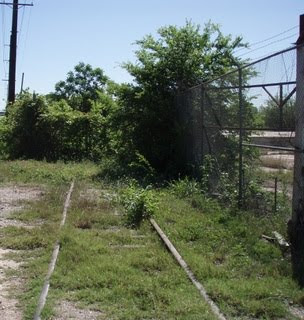Wastelands and Margins
What are the roots that clutch, what branches grow
Out of this stony rubbish? Son of man,
You cannot say, or guess, for you know only
A heap of broken images, where the sun beats,
And the dead tree gives no shelter, the cricket no relief,
And the dry stone no sound of water. Only
There is shadow under this red rock
(Come in under the shadow of this red rock),
And I will show you something different from either
Your shadow at morning striding behind you
Or your shadow at evening rising to meet you;
I will show you fear in a handful of dust.
- T.S. Eliot, The Wasteland
Out of this stony rubbish? Son of man,
You cannot say, or guess, for you know only
A heap of broken images, where the sun beats,
And the dead tree gives no shelter, the cricket no relief,
And the dry stone no sound of water. Only
There is shadow under this red rock
(Come in under the shadow of this red rock),
And I will show you something different from either
Your shadow at morning striding behind you
Or your shadow at evening rising to meet you;
I will show you fear in a handful of dust.
- T.S. Eliot, The Wasteland

Elliot’s “Wasteland” resonates with negative connotations of neglect, abandonment, and emptiness. Etymologically, wasteland has roots in the vastness of the barren, uninhabitable desert wilderness of Western biblical tradition. This linkage between wasteland and wilderness emerges in other ways in the discourse of marginal nature, but here it resonates through the basic spatial distinction between urban space inhabited by humans and space which is perceived as devoid of humans and “going to waste”. “Waste” has roots in the Latin vastare, to lay waste, devastate - but as an adjective it evokes synonyms like discarded, worthless, valueless, profitless, useless, empty, barren, dreary, uninhabited, desolate, superfluous, unnecessary, functionless, purposeless. Indeed, wasteland warrants each of these adjectives when viewed from the perspective of urban growth and management in a narrow capitalist sense, but, as noted above, there are other more positive interpretations of wastelands which engender a wasteland discourse of freedom and attraction. Much of this wasteland discourse echoes the criticisms of weedy, degraded marginal nature.
Wastelands are the home-realm of marginal nature in the built landscape, but the territory of marginal nature reaches beyond literal wasteland sites and infiltrates throughout the city. Urban waste space is deliberately a broader term than the category of “vacant land” used by planners, because it also includes smaller patches and scraps of habitat intruding on developed sites, as well as literal wastelands like dumpsites and sewage ponds. Types of waste space include whole parcels, like the iconic vacant lot, which may be an undeveloped industrial tract or a small backlot in a residential neighborhood. Marginal nature ventures forth from these larger wastelands to colonize the neglected drainage channels, alleyways, forgotten corners of developed tracts, and even claims walls and fencelines, creating habitat wherever the flora and fauna of marginal nature can establish themselves.

No comments:
Post a Comment